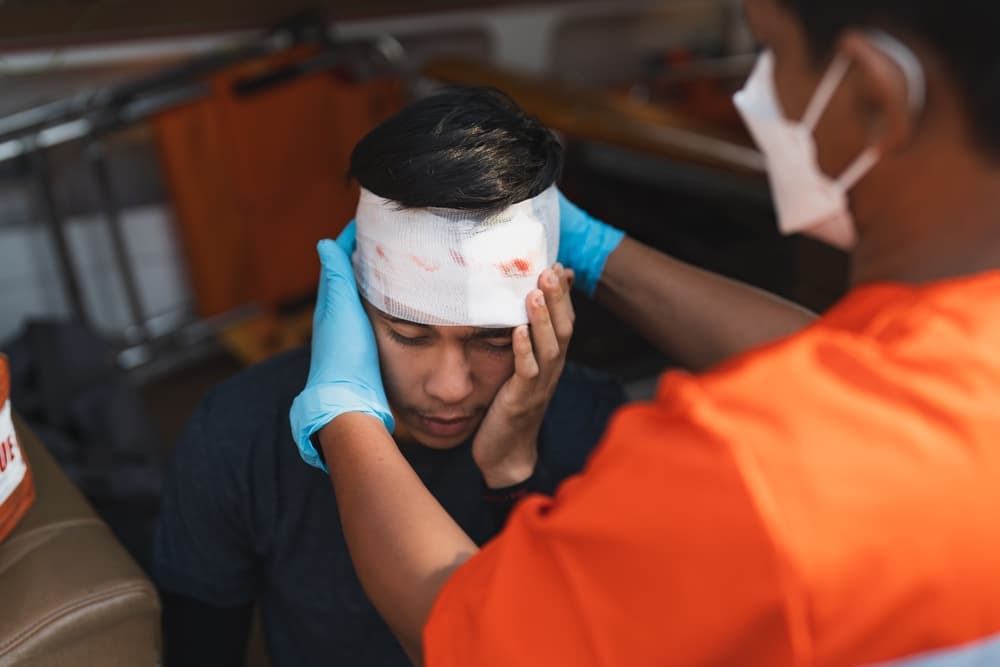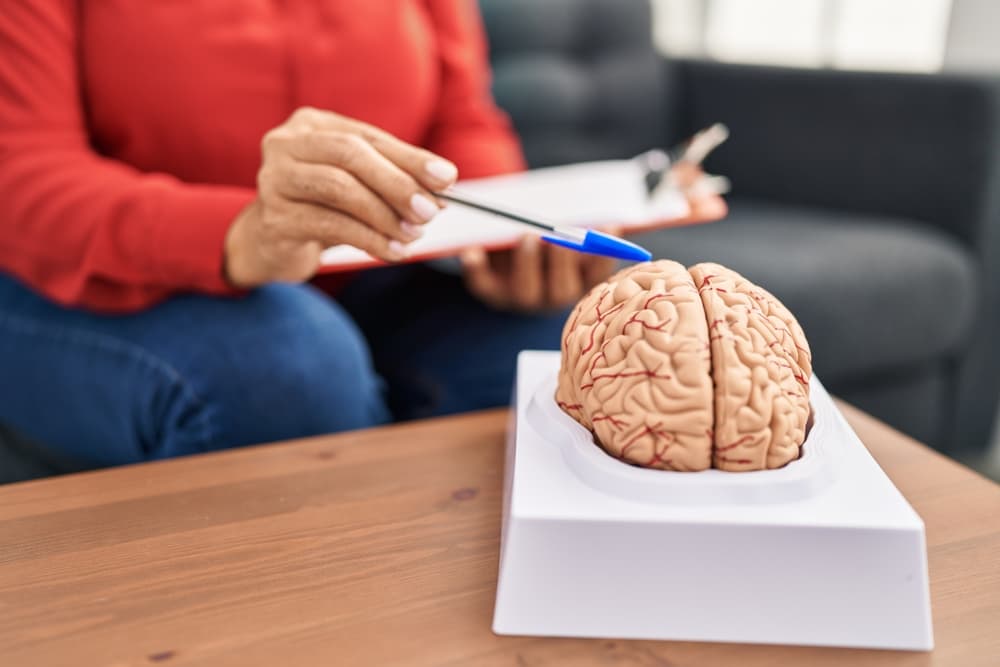Head injuries frequently occur in accidents resulting from others’ negligence, including motor vehicle accidents and slip and falls.
In addition to undergoing comprehensive medical treatment following a head injury, always speak with an experienced personal injury lawyer right away about a possible legal case. A case can provide financial support for your medical bills and other injury-related losses.
The value of a head injury claim or lawsuit depends on various factors, including the severity of the injury and the cost of all related medical treatment.
An experienced San Antonio personal injury attorney can estimate the likely value of your head injury case and aggressively represent you during all settlement negotiations and litigation proceedings in your case.
Never trust insurance companies or other parties if they try to tell you what your claim is worth. Instead, always hire your own legal representative to assess your case.
Factors That May Affect the Value of a Head Injury Claim

Many factors come into play when calculating losses from a head injury.
One key factor that affects the value of a head injury claim is the severity and long-term consequences of the injury.
Head injuries vary widely in their severity, ranging from mild concussions to severe traumatic brain injuries with permanent cognitive impairments and disabilities. The more severe the injury and the greater its repercussions on the victim’s life, the higher the potential value of the claim.
In addition, the extent of the damages the victim incurs, both economic and non-economic, directly influences the value of the claim.
Economic damages are measurable financial losses such as medical expenses, lost income, and property damage directly attributable to the head injury.
Non-economic damages, on the other hand, compensate the victim for intangible losses such as pain and suffering, emotional distress, and loss of enjoyment of life.
The total amount of economic and non-economic damages the victim receives reflects the overall effects of the injury on the victim’s physical, emotional, and financial well-being.
Moreover, the defendant’s degree of negligence or liability for the accident plays a significant role in determining the value of the claim.
The victim may receive punitive damages in addition to compensatory damages to punish the defendant and deter similar egregious behavior. The potential for punitive damages increases the overall value of the claim and provides additional compensation for the victim’s losses.
Damages an accident victim can recover in a head injury claim include:
- Economic Damages – These compensate for measurable financial losses incurred as a result of the head injury, such as medical expenses, rehabilitation costs, lost income, and property damage.
- Non-economic Damages – These compensate for intangible losses and hardships the victim experienced, including pain and suffering, emotional distress, loss of consortium, and loss of enjoyment of life.
- Punitive Damages – In cases involving particularly egregious conduct by the defendant, the victim may pursue punitive damages to punish the defendant and deter similar behavior in the future.
Medical Complications From Various Head Injuries

Serious head injuries resulting from someone else’s negligence can lead to various medical complications that significantly affect the victim’s health and well-being. These complications may arise immediately following the injury or develop over time, requiring extensive medical treatment and rehabilitation.They include the following:
- One potential complication of a serious head injury is traumatic brain injury (TBI), which occurs when the brain sustains significant trauma from a sudden blow, jolt, or penetrating injury. TBIs can result in a range of symptoms, including cognitive impairments, memory loss, speech difficulties, motor deficits, and changes in mood or behavior. The severity of TBI can vary, from mild concussions to severe traumatic brain injuries with long-term cognitive and functional impairments.
- Another common complication is intracranial hemorrhage, where bleeding occurs within the skull, putting pressure on the brain and potentially causing further damage. Subdural hematomas, epidural hematomas, and subarachnoid hemorrhages are among the types of intracranial hemorrhages that can occur following a serious head injury. Prompt medical intervention is essential to address intracranial hemorrhages and prevent further neurological damage.
- In addition, serious head injuries can increase the risk of seizures, which occur when abnormal electrical activity in the brain leads to sudden, uncontrolled movements or loss of consciousness. Post-traumatic seizures may occur immediately following the injury or develop weeks to months later, requiring medication and ongoing monitoring to manage effectively.
- Furthermore, individuals who sustain serious head injuries may experience complications related to their physical and cognitive functioning. These may include difficulties with balance and coordination, sensory impairments, language deficits, and challenges with memory, attention, and functioning. Rehabilitation programs tailored to the individual’s specific needs can help address these functional impairments and improve overall quality of life.
- In some cases, serious head injuries may lead to long-term neurological conditions such as epilepsy, Parkinson’s disease, or chronic traumatic encephalopathy (CTE). These conditions can have profound effects on the individual’s cognitive functioning, mood, and behavior, requiring ongoing medical management and support from healthcare professionals.
- Finally, serious head injuries can have significant psychological and emotional consequences for the victim and their loved ones. Depression, anxiety, post-traumatic stress disorder (PTSD), and adjustment disorders are among the psychological conditions that may arise following a traumatic head injury. Mental health treatment and support services are essential for addressing these emotional challenges and promoting recovery and well-being.
The medical complications resulting from serious head injuries that someone else’s negligence has caused can have far-reaching consequences for the victim’s physical, cognitive, and emotional health.
Prompt medical intervention, thorough rehabilitation, and ongoing support are essential for maximizing recovery and improving long-term outcomes.
Occurrences That Can Result in a Head Injury

Head injuries often occur due to others’ negligence in various situations where parties have neglected safety precautions or inadequately addressed risk. These incidents can lead to traumatic injuries with serious consequences for the victim’s health and well-being.
One common scenario is slip-and-fall accidents, where negligence in maintaining safe premises can result in hazardous conditions.
For example, if a property owner fails to clean up spills promptly or neglects to repair broken steps or uneven surfaces, individuals may trip or lose their balance, leading to head injuries such as concussions or skull fractures.
Similarly, motor vehicle accidents frequently result in head injuries due to negligent driving behaviors such as speeding, distracted driving, or driving under the influence.
When drivers fail to obey traffic laws or drive recklessly, collisions can occur, causing occupants to strike their heads on surfaces within the vehicle or other objects, resulting in head trauma ranging from mild concussions to severe traumatic brain injuries.
Sports-related incidents also contribute significantly to head injuries, particularly in contact sports where collisions are common.
Negligence in enforcing safety protocols, providing appropriate protective gear, or adequately training athletes on proper techniques can increase the risk of head injuries such as concussions, skull fractures, or even spinal cord injuries during athletic competitions or practices.
Physical altercations represent another scenario where head injuries can occur due to others’ negligence, whether through intentional acts of violence or inadequate intervention to prevent harm.
When someone strikes an individual in the head during a fight or altercation, serious injuries can result, highlighting the importance of taking measures to address aggressive behavior and ensure personal safety.
Workplace accidents also pose risks of head injuries when employers fail to provide a safe working environment or proper training on safety procedures.
Falls from heights, being struck by falling objects, or accidents involving machinery can all lead to head injuries if employers neglect to implement safety measures or enforce regulations to protect employees from harm.
Additionally, recreational activities such as cycling, skiing, or skateboarding can result in head injuries when individuals ignore safety guidelines or fail to wear protective equipment.
Negligence in monitoring weather conditions, maintaining equipment, or adhering to traffic rules can increase the risk of accidents during recreational pursuits, resulting in head injuries ranging from concussions to more severe trauma.
Head injuries typically occur when others negligently fail to take preventative measures or overlook risks. Recognizing these potential hazards and taking proactive steps to address them can help lessen the risks of head injuries and promote safer environments for everyone.
Proving a TBI Case
Successfully proving a traumatic brain injury (TBI) case resulting from someone else’s negligence requires gathering compelling evidence and building a strong legal argument to establish liability and obtain compensation for damages.
Several key steps in this process can demonstrate the negligent actions of the responsible party and the extent of the injury suffered:
- First, it’s essential to document the circumstances surrounding the incident that led to the TBI. This includes collecting witness statements, photographs of the scene, and any relevant documentation, such as accident reports or medical records. Eyewitness testimony can be particularly valuable in corroborating the events leading up to the injury and identifying any negligent actions by the at-fault party.
- Next, establishing a causal link between the negligent actions of the at-fault party (defendant) and the resulting traumatic brain injury is crucial. This may involve obtaining expert opinions from medical professionals specializing in neurology or traumatic brain injuries, who can provide testimony regarding the cause of the injury, its severity, and the long-term effects on the victim’s health and well-being.
- Furthermore, demonstrating the extent of the damages incurred as a result of the TBI is essential for securing compensation. This includes documenting medical expenses such as hospital bills, doctor’s visits, diagnostic tests, medication costs, and rehabilitation services. In addition, carefully documenting lost income or diminished earning capacity resulting from the inability to work due to the injury is necessary to quantify the financial repercussions on the victim’s life.
- Moreover, gathering evidence of non-economic damages, such as pain and suffering, emotional distress, and loss of enjoyment of life, is essential. This may involve testimony from the victim, family members, or mental health professionals regarding the physical and emotional toll of the TBI on the victim’s life and relationships.
- In some cases, the victim may pursue punitive damages if the defendant’s actions were particularly reckless. Punitive damages intend to punish the defendant for their wrongful conduct and deter others from engaging in similar behavior in the future.
Successfully proving a TBI case requires careful preparation, thorough investigation, and skilled legal representation.
By compiling compelling evidence, demonstrating causation and damages, and presenting a persuasive legal argument, victims of traumatic brain injuries can seek accountability and obtain the compensation they deserve for their losses.
Litigating a Head Injury Claim in Court
After filing a lawsuit in a head injury case resulting from another person’s negligence, several key steps occur as the legal process unfolds.
These steps allow lawyers to pursue justice on the accident victim’s behalf, gather evidence, and ultimately seek compensation for damages incurred due to the head injury.
Some of the most important steps during litigation include:
- Taking part in the discovery process, where the parties exchange answers to written interrogatories, exchange documents, take depositions, and learn more about each side’s version of the case
- Participating in settlement conferences or mediation sessions in an attempt to resolve the case outside of court
- Taking the case to a bench or jury trial, where a judge/jury listens to the evidence and decides the outcome of all disputed issues, including the amount of compensation to award the accident victim
- Pursuing alternative dispute resolution (ADR), such as binding arbitration, instead of taking the case to trial
After filing a lawsuit in a head injury case arising from someone else’s negligence, the legal process unfolds through various stages, including discovery, settlement negotiations, and trial (or ADR).
By navigating these steps with the help of an experienced personal injury attorney, victims can seek accountability and obtain the compensation they deserve for their losses.
Contact a Personal Injury Lawyer Right Away

If you suffered a head injury due to someone else’s negligent behavior, a skilled personal injury attorney can accurately assess the value of your case and take appropriate legal steps on your behalf.
Through aggressive settlement negotiations and careful preparation, your lawyer will do everything possible to maximize your settlement or litigation award and obtain the justice you deserve.
